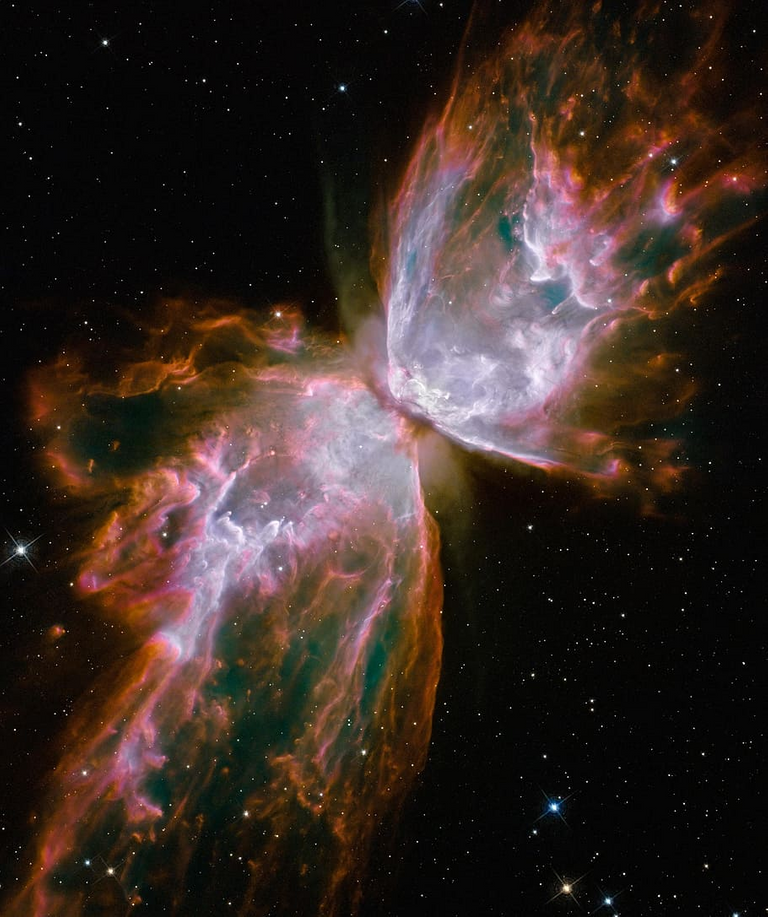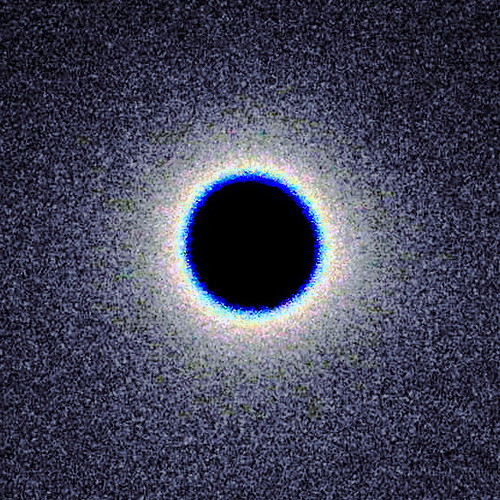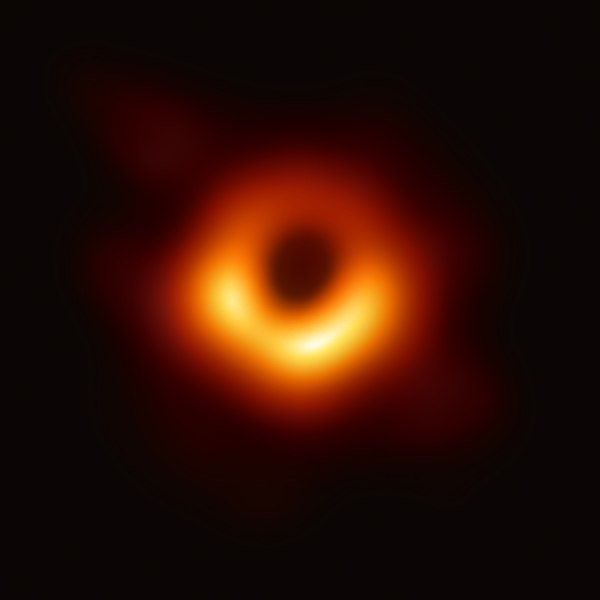Black holes are such an objects in space whose gravity is so powerful that even light cannot escape from it. According to the theory of general relativity, mass causes curvature in space and time. The greater the mass, the greater the velocity.
A black hole is the gravitational field that remains when a star collapses under its own gravity to an infinitesimal point. Within a certain distance from the point—at the black hole’s event horizon—gravity grows so strong that not even light can escape. This radius of critical value is called the Schwarzschild Radius. This radius varies for different bodies and depends on the mass of that body. This radius is 3 km for the mass of the Sun, if we cover the Sun in a radius of 3 km, it will become a black hole. For the Earth it is only 9mm.
Classification of black holes
Roughly black holes are placed in three main categories. They are:
- Micro black holes
- Stellar mass black holes
- Super massive black holes
Now let's discuss these three one by one.
Micro Black Holes
They are also called quantum mechanical black holes, they are hypothetical black holes, that is, there is no evidence of their presence so far. The concept of black holes with mass less than stellar mass was given by Stephen Hawking in 1971. There is a limit to the mass of these microscopic black holes. According to the theories of the Schwarzschild radius and the Compton wavelength, the minimum mass of a black hole can be 22 micro grams, which is called Planck mass.

Source
According to Quantum mechanics, Black holes may have played an important role in the atmosphere of extreme energy and density at the beginning of the universe. But such black holes were unstable and would have disappeared by Hawking radiation. In a research paper in Stephen Hawking in 1975, it was shown that the smaller the black hole under the influence of the quantum mechanics effect, the faster it will dissipate. As a result, new particles may have suddenly been bombarded by black hole explosions.
According to mathematical calculations, the energy required to create a microscopic black hole should be 1019 GeV. This is more than the energy that can be generated by the technology available in the present.
Stellar Mass Black Holes
The second class of black holes consists of black holes of stellar mass. Most research has been done on these black holes. They are found in nature, unlike the subtle black hole. The process of making them is also known to scientists. According to the name, these black holes are formed due to the collapse / contraction during the death of a superstar. The nucleus of these giant stars has the capability of fusion of heavy elements on a full scale. And these stars combine elements such as carbon, neon, oxygen, silicon, sulfur.

Source
As the fusion reaches the nickel-56 via the alpha ladder, the reaction chain stops. Fusion of zinc with nickel is not thermally conducive, causing the nucleus to stop reacting, leaving the nucleus inactive. In this case, the star starts to shrink with its own gravity. If the mass of the star is high then no one can stop its contraction and it collapses into a black hole.
The critical boundary of a black hole beyond which nothing can escape, not even light, is called an event horizon. Everything is normal in the context of matter falling into the black hole. But in the context of external inspector, he will find everything different from gravitational time dilation.
As the gravitational pull increases, the red deviation in the light emanating from the material falling in the black hole will increase and as soon as it reaches the event horizon, the excess red deviation will fade. Therefore an external observer would never see the creation of the event horizon of a black hole.
Super massive Black Holes
As the name suggests, these black holes are massive and are found in the center of galaxies. They have millions times more mass than the Sun. But the density of these black holes may be less than the density of water. The reason is simple that the Schwarzschild radius is proportional to its mass and the volume is proportional to the cube of the radius. The density of a black hole is inversely proportional to the square of mass in it. The larger the mass of a black hole, the lower its density.

Source
In addition, the tidal force of these black holes is also very low. The tidal force on the incident horizon of a black hole is inversely proportional to the square of its mass. In this way one will feel the same tidal force between the head and foot of the person standing on the surface of the Earth as between the head and foot of a person standing on the incident horizon of a black hole with a mass of 10 million M*(mass of the Sun).
The process of manufacturing such a strange body is unknown and is a subject of research in the field of astronomy. There are many concepts in this regard. According to one concept, the seeds of these black holes are those black holes with a mass of ten or a few hundred solar masses formed by the death of the superstars and the surrounding stars have been stretched by stretching material from the gas bar.
Some scientists believe that a black hole with an initial stellar mass formed after the death of the initial stars of the universe has become a super massive black hole. The correct concept and theory has not been revealed so far.
I have a few comments with respect to this post, that is quite un-precise to my taste (even for a general audience).
There is no theory of ‘simple relativity’. You probably mean ‘general relativity’ here. Please consider fixing your text.
I am not sure to understand what this means? A black hole is not a sphere.
On the other hand, I don’t get much what you mean with the discussion on quantum black holes. Note that tiny black holes can actually exist. There are fine prints in the corresponding concepts so that we may evade some of the constraints.
Finally, what does the following mean?
General relativity is well known…
I am not a believer in black holes, I'll challenge you with an alternative theory ;)
https://www.thunderbolts.info/wp/2019/02/06/do-black-holes-matter/
Hi,
However, we have proofs for black holes. Why disregarding observations?
On the other hand, the 'theory' you mention has in contrast issues with various observations. Those are well documented online. For that reason, it is not considered by most scientists today. At some point, when an idea contradicts data, it has to be abandoned or modified...
this is actually quite a puzzling argument, because as far as I understand the situation it is exactly the other way around.
First, I'd point out that there are no proofs in science. We can only falsify hypotheses or theories. A black hole has never been proven to exist.
Why use fanciful theories when Occam's razor would suggest a far simpler solution to this problem?
I am not an astrophysicist so I can't go too deep into this matter, but I do find it strange that an alternative theory (the electric universe theory which is gaining more traction) which can be empirically verified in plasma laboratories is being dismissed so quickly when it could potentially offer so many insights.
https://www.thunderbolts.info/wp/2019/02/06/do-black-holes-matter/
There are actually proofs in science: in maths for instance. But maybe not here, in the physics context. I thus agree with you. I wrote proof but I was actually meaning evidence. We are on a social media platform after all ;)
So to go back to my point: we have evidence for black holes: gravitational waves and Event Horizon results.
I disagree with this. In both conferences and scientific journals, no one works on this. The reason is simple. Such a “theory” (note the quotes) has never been consistently and rigorously formulated. In addition, there are many flaws (just google “electric universe debunked” to get some).
But there are so many flaws with the standard model, too, right? There is almost daily an article about something that astronomers are "perplexed" about and can't make sense of it.
I am not necessarily a proponent of the EU theory, but I see how it makes very elegant predictions and has a framework that "makes sense". Of course there is a lot of criticism against this model (as it should be in science), but it's not like they aren't aware of this or are ignoring it: https://www.everythingselectric.com/electric-universe-debunked/
I think this whole debate actually reveals more about the process of how we learn as a human species about our world. And as it has been pointed out science in specific is rarely a linear progressive path towards more understanding. Instead, it seems to evolve in scientific revolutions in which established ideas and theories have to be fundamentally revised according with new empirical evidence.
There are issues with the standard model of cosmology, for sure. However, when you account for the issues and compare with what is correctly predicted, it is the best setup on the market. On many aspects, it makes very precise predictions that can be compared with very precise data: it works. In addition, this is the simplest model. So a lot of great predictions from a few basic principles and some free parameters.
On the other hand, from my understanding, the electric universe does not make really any quantitative prediction. The page you linked actually goes in that direction: only words, videos, no quantitative statement. I would like to see one of the proponent using the theory to quantitatively derive its signature. This has never been done. For that reasons, most scientists simoly discards it. When something does not work, it does not work and one should move on. It is good to try things, but it is also good to move on when they do not work.
Personally, I have more interests in theories of modified gravity at large scales (that are now in quite big troubles after the discovery of the gravitational waves by the way, but they can still resist in some ways).
This is what a lot of people would want to see. Although there is work in that area. For example, a paper by Donald Scott "Birkeland Currents and Dark Matter":
http://www.ptep-online.com/2018/PP-53-01.PDF
I guess what fascinates a lot of people, myself included is especially the qualitative aspect of the theory. And I think one should not dismiss a theory purely on methodological grounds. It is a new way of looking at human history (mythology) as well as the space that surrounds us. Of course we don't have to throw the gravitational model out of the window, as it works very well in describing e.g. the movements of planets in our solar system as well as many other things. But there are other phenomena like comets which very strongly support the basic ideas of the EU model. It has made many predictions about them which have been proven to be very accurate and they would seem to point to the electrical nature of the universe at large.
Learn more.This post earned a total payout of 1.040$ and 0.520$ worth of author reward that was liquified using @likwid.